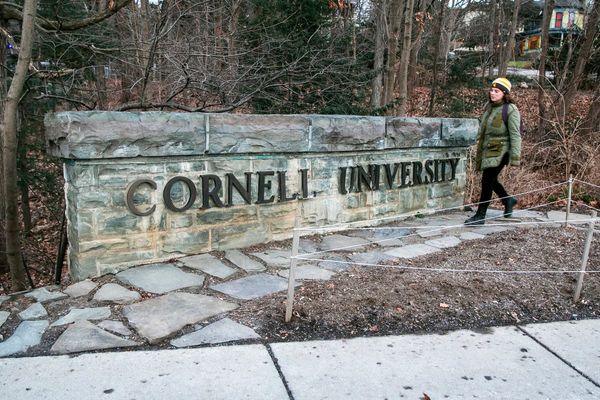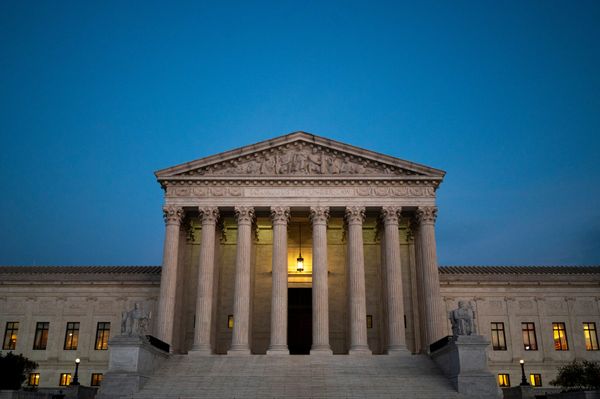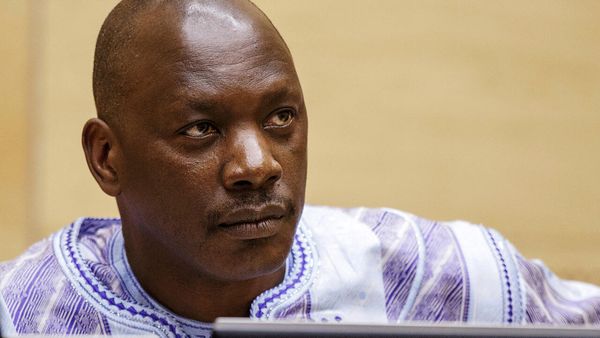At first glance, nothing really stands out about it except you can guess it’s very old.
A three-story structure made of dry laid stone sitting on a Scott County farm has no historic plaque describing its unique place in American history. The large double doors and four windows in the front are boarded up. The building’s roof has collapsed. The only sign of preservation is a large metal roof supported by wood beams that sits above the building shielding it from rain and snow.
But talk to the owner of this land just a few miles outside the fast-growing city of Georgetown, and you soon learn something very special happened here almost 200-years ago. At that time, Kentucky was considered the West of an expanding country which was grappling with how to deal with Native American tribes.
Dr. William “Chip” Richardson, an ophthalmologist in Georgetown, has a deep passion for American history. He says his parents made a habit of taking young Chip to historical reenactments.
Ten years ago, Dr. Richardson bought 170 acres in rural Scott County between Great Crossing and Stamping Ground. He had no idea about the deep history represented by the old stone building, but it didn’t take long for him to do some research, and discover he owned a little-known piece of Indian history.
“You can imagine the discussion with my father. So, Dad; I found a couple of different parcels in Scott County, and this one happens to have this Indian school on it. And I think the choice he said was pretty obvious. If you have an opportunity to try and to save a little bit of history, like here’s your chance.”
That old stone building was a dormitory at Choctaw Academy. It opened in 1825 as a school for young Indian boys from the Choctaw Nation.
At the time the Choctaw tribe was in Mississippi. Dr. Richardson says tribal leaders went to Washington D.C. to meet with the federal government.
They wanted to create a school where Indian boys would learn from a diverse curriculum that included reading, writing, math, Greek, Latin, and philosophy.
Unlike traditional missionary schools of the time, the academy would be financed largely through the Indian tribes, and be secular, meaning non-religious.
Dr. Christina Snyder, a History Professor at Penn State and author of a book that includes a section on Choctaw Academy, says tribal leaders wanted the boys to maintain their Indian heritage. “They really wanted to maintain their own political independence and their own cultural independence so they felt they needed strong leaders who stand up to the United States, who could be counted on as interpreters, so they didn’t want to necessarily have to rely on white people to act as interpreters during such important things as treaty negotiations.”
You may wonder how Choctaw Academy ended up in Scott County. A prominent landowner and politician, Richard Mentor Johnson, was very interested in Indian affairs, and owned the land where the academy started. Johnson was a U-S Senator from Kentucky and would later be elected the nation’s ninth Vice-President in 1837. Johnson’s brother-in-law, William Ward, also of Scott County, was the federal government’s Indian Agent for the Choctaw Nation.
In November of 1825, the first 21 Choctaw students ages six to twenty years old arrived at the academy. Dr. Richardson says, “the tribe sent their most promising young men, age six to twenty, to the Choctaw Academy, and they came by horse and buggy from mostly Mississippi.”
In all, 17 tribes, including Cherokee and Shawnee, sent boys to the school, and it’s estimated about 600 of them studied there from 1825 to 1848.
The school was also popular with some white families in the area, and they paid tuition to have their children educated at the academy.
Dr. Snyder says it was a unique school. “This is an incredibly diverse place. It’s a place where people there speak eighteen different languages. (Each Indian tribe spoke their own language). It was seen as an experimental place. There’s no other place like it in the history of antebellum America.” Six years after it opened the school was moved to a nearby property.
Dr. Richardson says none of those buildings exist today. But by then the Choctaw tribal leaders were not happy with the student’s living conditions and believed the school’s learning environment had deteriorated. Eventually all the participating Indian tribes pulled their funding, and the school closed in 1848.
Was it a success? Some of the students from Choctaw Academy went on to school at Transylvania University in Lexington, Kentucky and studied law and medicine. Dr. Snyder says, “they did have this generation of leaders that were quite effective advocates for their own nation. Some of these young men did become doctors and lawyers and translators.” She says Choctaw Academy was largely forgotten because most people didn’t learn about it in the history books. “I think one of the reasons its fallen thru the cracks, that it doesn’t fit the standard narrative that we think of in American history. It was a place where native nations really tried to prioritize peace and collaboration.”
For the future, Dr. Richardson is looking for funding to preserve and renovate the Choctaw Academy dormitory. He estimates it will cost several hundred thousand dollars to save the dormitory and make it safe for the public to go inside.
“I’m happy to do whatever it takes at this point. Finding that magic benefactor, in this kind of world we call the Angel. I’m looking for my Angel.”
For pictures and more history of the school check out “Save the Choctaw Academy” on Facebook.
**In a sea of partisan news, WEKU is your source for public service, fact-based journalism. Monthly sustaining donors are the top source of funding for this growing nonprofit news organization. Please join others in your community who support WEKU by making your donation.







